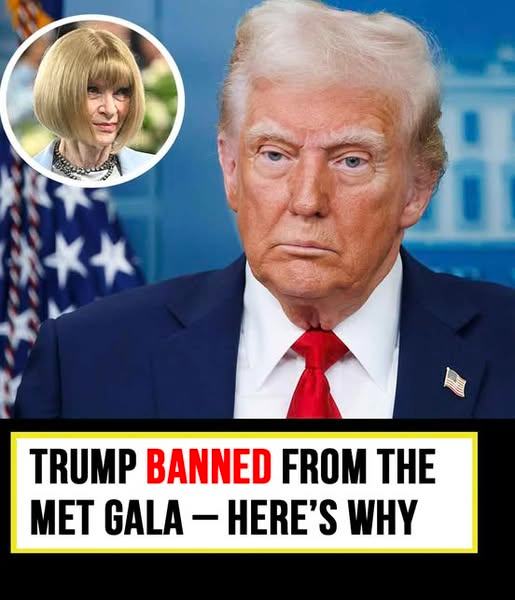Donald Trump has a long history with the Met Gala. In the 1980s and ’90s, he was a frequent guest, attending with his then-wives Ivana Trump and later Marla Maples. In 2004, he even proposed to Melania Trump on the way to the iconic event. Once a regular presence on its red carpet, Trump is now notably absent—and has been for years.
The Met Gala, held each May at the Metropolitan Museum of Art in New York City, is considered one of fashion’s most prestigious nights. But over time, the event has evolved in both tone and guest list. While it has always celebrated creativity and glamour, today’s Gala places increasing emphasis on cultural relevance, artistic expression, and inclusivity.In 2017, Vogue editor-in-chief Anna Wintour, who has chaired the Gala since 1997, made headlines during an appearance on The Late Late Show with James Corden when asked if there was anyone she would not invite back. Her answer: “Donald Trump.” Though she did not elaborate further, the comment marked a turning point in how the event aligned itself with public figures.
Though Wintour has maintained that the Met Gala is not political, the selection of guests has come to reflect a particular vision—one centered on creativity, representation, and contemporary cultural narratives. Today, it’s not only about fame or status; it’s about the stories the event chooses to highlight.This year’s theme, Superfine: Tailoring Black Style, celebrated the contributions of Black designers and the influence of Black fashion throughout history. It was a powerful reminder of how clothing can be a form of cultural storytelling. According to cultural commentator Louis Piscano, the theme marked an intentional move toward recognizing voices that have historically been underrepresented in mainstream fashion spaces.
Notably, Trump wasn’t the only high-profile figure absent this year. Other prominent business and tech leaders, including Elon Musk, Jeff Bezos, and Mark Zuckerberg, were also not in attendance. While their absences were not officially explained, they reflect a shift in who the Gala chooses to feature—a reflection, perhaps, of its changing values and priorities.In this new era, the Met Gala has become more than a night of fashion—it’s a cultural stage that amplifies voices and values aligned with artistic storytelling and social resonance. Trump’s earlier presence at the event captured a different moment in time, one where celebrity and public attention were the main currency. Today, the focus has shifted to deeper themes of expression, identity, and inclusion.Whether or not Donald Trump will ever return to the Met Gala remains to be seen. But for now, his absence reflects the Gala’s evolving identity—one that prioritizes not just who shows up, but what they represent.
Because in the end, the Met Gala isn’t just about what people wear. It’s about what those choices say—and who gets the opportunity to speak.
